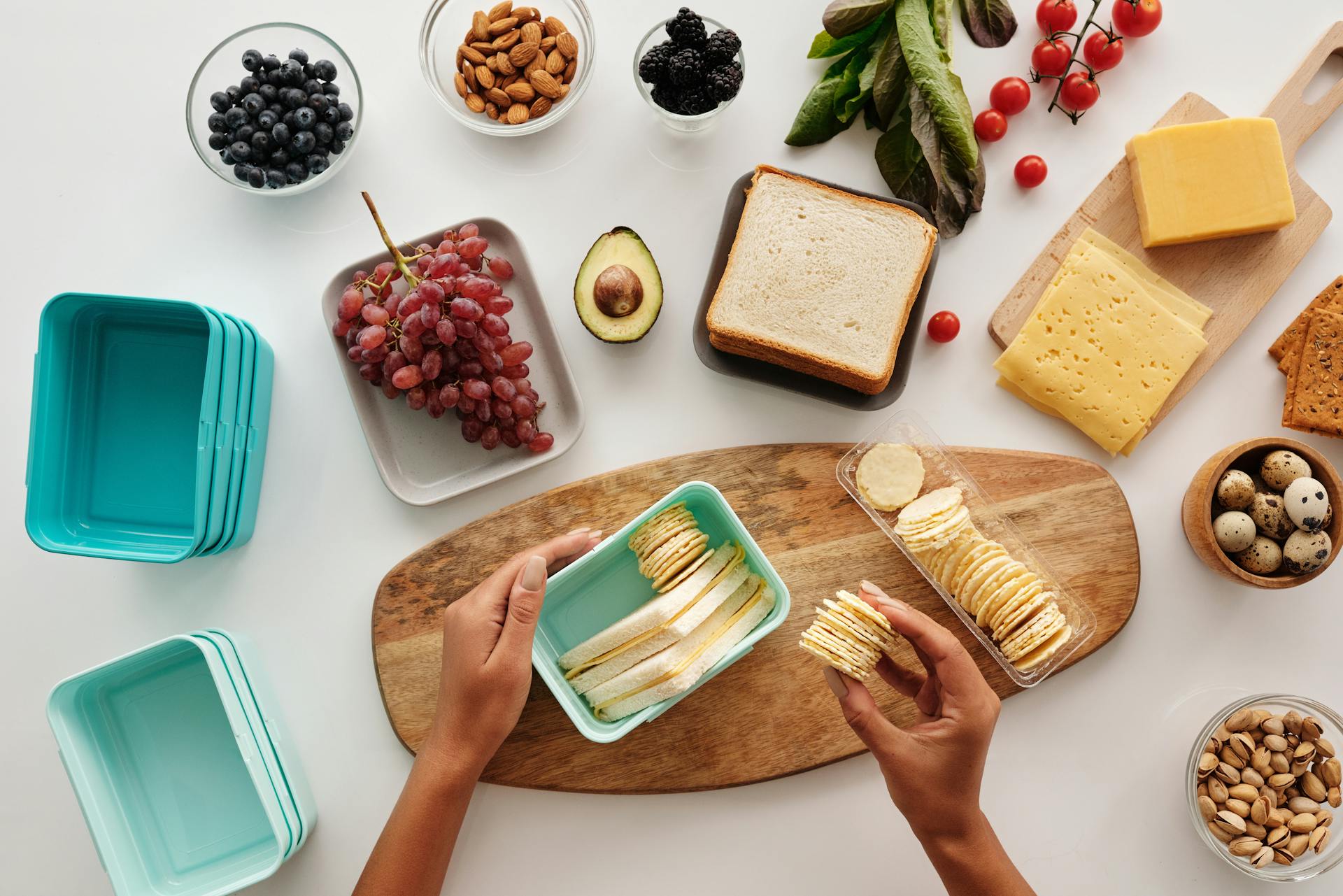
Magnesium is an essential nutrient that plays a crucial role in many bodily functions, including muscle and nerve function, blood sugar regulation, and bone health. Unfortunately, studies have shown that many people don't consume enough magnesium in their diets. Luckily, there are 10 foods high in magnesium that you can easily incorporate into your meals to boost your health.
These magnesium-rich foods include leafy greens such as spinach and kale, nuts like almonds and cashews, whole grains such as quinoa and brown rice, as well as legumes like black beans and lentils. Incorporating these foods into your diet can help improve sleep quality, reduce stress levels, and even lower the risk of heart disease.
If you're looking for ways to increase your magnesium intake and support overall health and wellness, look no further than these 10 delicious and nutritious foods. Let's dive deeper into why magnesium is so important for our bodies and how these foods can help us stay healthy.
See what others are reading: Watermelon Health Benefits
Discover the Key to Success: Understanding the Bottom Line

Understanding the bottom line is the key to success, and when it comes to health, magnesium is an important mineral that you don't want to overlook. Including foods high in magnesium in your daily diet is crucial for a balanced diet, as this nutrient plays an essential role in our body's functions. In this medically reviewed article about 10 foods high in magnesium, you'll find nutritious foods listed that are easy to incorporate into your meals.
Magnesium is one of the most important nutrients that our bodies need to function properly. It helps with enzyme production, muscle and nerve function, and bone development. Unfortunately, many people don't get enough of this vital mineral in their diets. However, by adding some of the foods listed in this article to your daily meals, you can increase your intake of magnesium and keep your body functioning at its best.
In conclusion, if you're looking for a way to improve your overall health and well-being, understanding the importance of magnesium is crucial. This medically reviewed article provides a list of 10 foods high in magnesium that can easily be incorporated into your balanced diet. Take charge of your health today by incorporating these nutritious foods into your meals and start feeling better from October 14 2022 onwards!
Here's an interesting read: High Protein Foods
1. How we reviewed this article:
We take the accuracy and reliability of our articles seriously, especially when it comes to matters of health and nutrition. That's why our team of experts continually monitor the wellness space for the latest information on topics like magnesium-rich foods. For this article, we relied on several sources including the current version of the USDA Food Database, as well as input from registered dietitians Rachael Ajmera MS and Amy Richter. We also made sure to have it medically reviewed by experts in the field such as Franziska Spritzler and Frank Crooks. The article was last updated on Oct 14 2022, so you can rest assured that you're getting up-to-date information.
2. Read this next
Read this next: "10 Foods High in Magnesium". This article covers the benefits, recommended dosages, and possible side effects of this essential mineral lacking in many people's diets. Magnesium is important for heart health, lowering blood levels in type 2 diabetes, and reducing cancer risk. Discover 28 ways to make heart-healthy habits work for you and learn about the often-overlooked health problem of magnesium deficiency with 7 symptoms listed. Plus, find out how to gain muscle and lose weight by simply eating a healthier diet.
Boost Your Body with Magnesium-Rich Legumes, Nuts, and Seeds
Are you looking for a way to boost your body's magnesium levels? Look no further than legumes, nuts, and seeds! These foods are all good magnesium sources and can be easily incorporated into your diet. Some examples of legumes that are high in magnesium include black-eyed peas and black beans.
If you're looking for meat alternatives that also pack a punch when it comes to magnesium content, try tempeh cooked in soy sauce or soy cheese. Nuts like almonds, cashews, and soy nuts are also great sources of the mineral. And don't forget about seeds like pumpkin seeds, flaxseed, and chia seeds – these tiny powerhouses can be added to smoothies or sprinkled on top of a salad for an extra dose of magnesium.
For those who love peanut butter (who doesn't?), you'll be happy to know that this nutty spread is also a good source of magnesium. So next time you're feeling tired or need a little boost, reach for one of these magnesium-rich foods instead of reaching for caffeine or sugar-laden snacks. Your body will thank you!
Related reading: Ketogenic Diet Foods
Discover The Best Sources of Magnesium for Optimal Health
Magnesium is a vital mineral that our body needs to function properly. It helps in regulating nerve and muscle function, supports the immune system, and maintains strong bones. Some of the best sources of magnesium include spinach, almonds, avocado, dark chocolate, banana, pumpkin seeds, black beans, yogurt or kefir, salmon, and figs. Incorporating these foods into your diet can help you meet your daily magnesium requirements and improve overall health. So make sure to add these delicious options to your plate!
You might enjoy: Magnesium Benefits
Boost Your Health With These Magnesium-Rich Delights
Boost your health by incorporating magnesium-rich foods into your diet. Magnesium is an essential mineral that plays a vital role in maintaining overall health. Some foods high in magnesium include leafy green vegetables such as spinach and kale, grains like quinoa and brown rice, beans like chickpeas and black beans, and nuts like almonds and cashews. By including these delicious foods in your meals, you can ensure that you are getting the daily recommended amount of magnesium to keep your body functioning properly.
If this caught your attention, see: 50 Super Healthy Foods
Discover the Power of Magnesium in Whole-Grain Foods

Are you looking for a way to boost your daily magnesium intake? Look no further than whole-grain foods, which are rich in this essential nutrient. Breakfast cereals fortified with magnesium are a great place to start. Bran cereals and wheat germ are also excellent sources of magnesium, and they make a crunchy addition to any dish.
Another whole-grain food that packs a punch when it comes to magnesium is brown rice. Not only is it delicious and easy to prepare, but it's also an excellent source of fiber, which can help keep you feeling full and satisfied throughout the day. Try incorporating brown rice into your meals by pairing it with roasted vegetables or stir-fried tofu.
Incorporating more whole-grain foods into your diet is an easy and delicious way to boost your daily magnesium intake. With so many tasty options like breakfast cereals fortified with magnesium, bran cereals, wheat germ, and brown rice, adding more magnesium-rich foods to your plate has never been easier or more enjoyable.
What's the Deal with Magnesium?
Magnesium plays a big role in keeping our body working properly. It's involved in more than 300 chemical reactions inside us, making it essential to many of our bodily functions. One of its main jobs is helping our muscles and nerves communicate with each other. We receive messages from magnesium that help keep our heart rhythm steady and our blood sugar levels balanced.
But that's not all - magnesium also helps keep our joint cartilage healthy, and it's necessary for the body to make protein and bone. So how much magnesium do we need? For a woman age 19-30, it's recommended to get at least 310 milligrams per day - for men of the same age group, it's 400 milligrams. As we get older, we need even more - by age 30, men should be getting around 420 milligrams per day.
So where can we find this important mineral? Luckily, there are many foods high in magnesium that we can incorporate into our diets. Some great options include leafy greens like spinach and kale, nuts like almonds and cashews, and whole grains like brown rice and quinoa. By making sure we're getting enough magnesium through our food choices, we can help keep our bodies functioning at their best!
The Magic of Magnesium: How Water Can Boost Your Health
The human body requires magnesium to function correctly, and water is an excellent source for it. Although brand water may contain only a small amount of magnesium, every little bit helps. Magnesium plays a crucial role in our daily lives, from regulating muscle and nerve function to controlling blood glucose levels. Drinking enough water is essential to keep our bodies hydrated and healthy, so why not choose one that can offer additional benefits?
Discover the Benefits of Magnesium-Rich Fish!
If you're looking for a tasty way to boost your magnesium intake, look no further than fish! Fish provide magnesium along with other essential nutrients that are vital for good health. Magnesium is an important mineral that helps keep our muscles, nerves, and heart working properly.
One of the best fish sources of magnesium is Atlantic mackerel. This oily fish is not only high in magnesium but also contains other healthy fats like omega-3s which are great for heart health. Another great option is Atlantic pollock, which is also rich in magnesium along with protein to help build and repair tissues.
So if you're looking to add more magnesium to your diet, consider incorporating these delicious and nutritious fish into your meals!
Frequently Asked Questions
Is fish high in magnesium?
Yes, fish is high in magnesium. Magnesium is an essential mineral that plays a crucial role in various bodily functions, and consuming fish can be a great way to increase your intake of this nutrient.
What are the side effects of magnesium?
Some common side effects of taking magnesium supplements include diarrhea, nausea, and stomach cramps. However, these side effects are typically mild and go away on their own.
Are lentils high in magnesium?
Yes, lentils are high in magnesium. One cup of cooked lentils contains approximately 71 milligrams of magnesium, which is about 18% of the recommended daily intake for adults.
What are the health benefits of magnesium?
Magnesium is essential for many bodily functions, including nerve and muscle function, maintaining a healthy heart rhythm, and strong bones. It also helps regulate blood sugar levels and supports a healthy immune system.
What are some high-magnesium foods?
Some high-magnesium foods include spinach, almonds, avocado, black beans, and dark chocolate.
Featured Images: pexels.com


